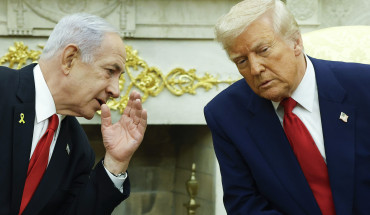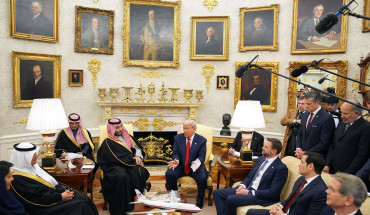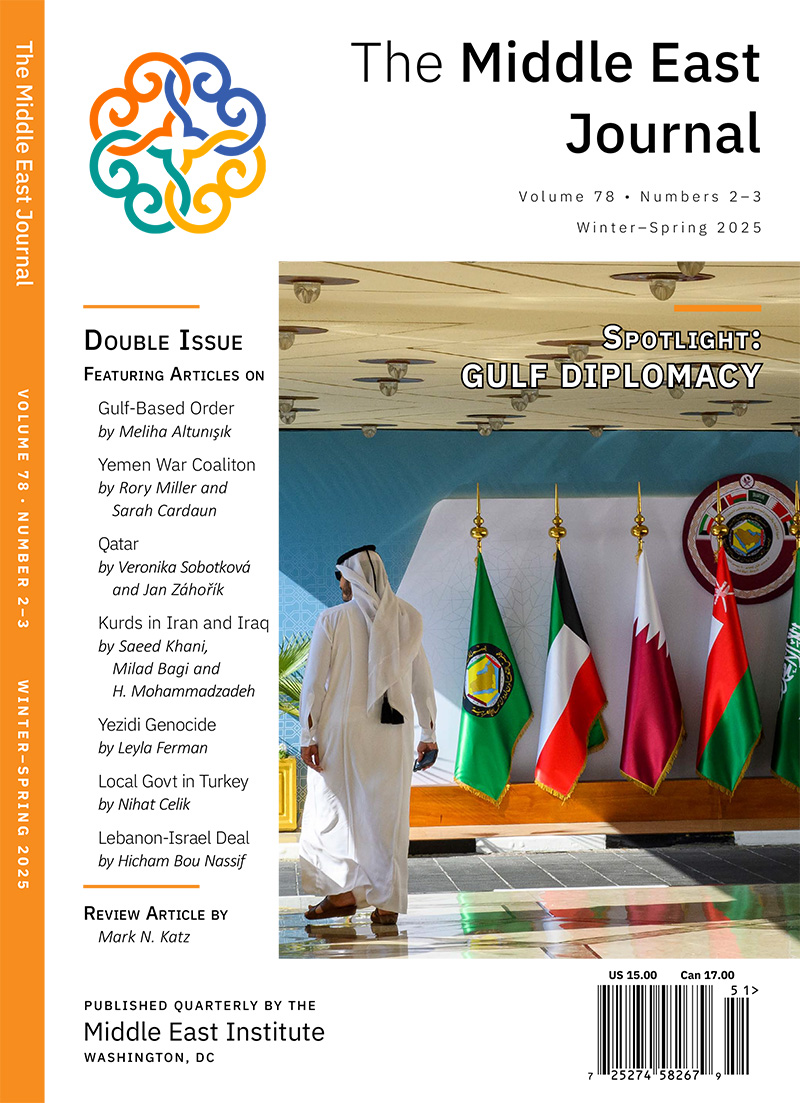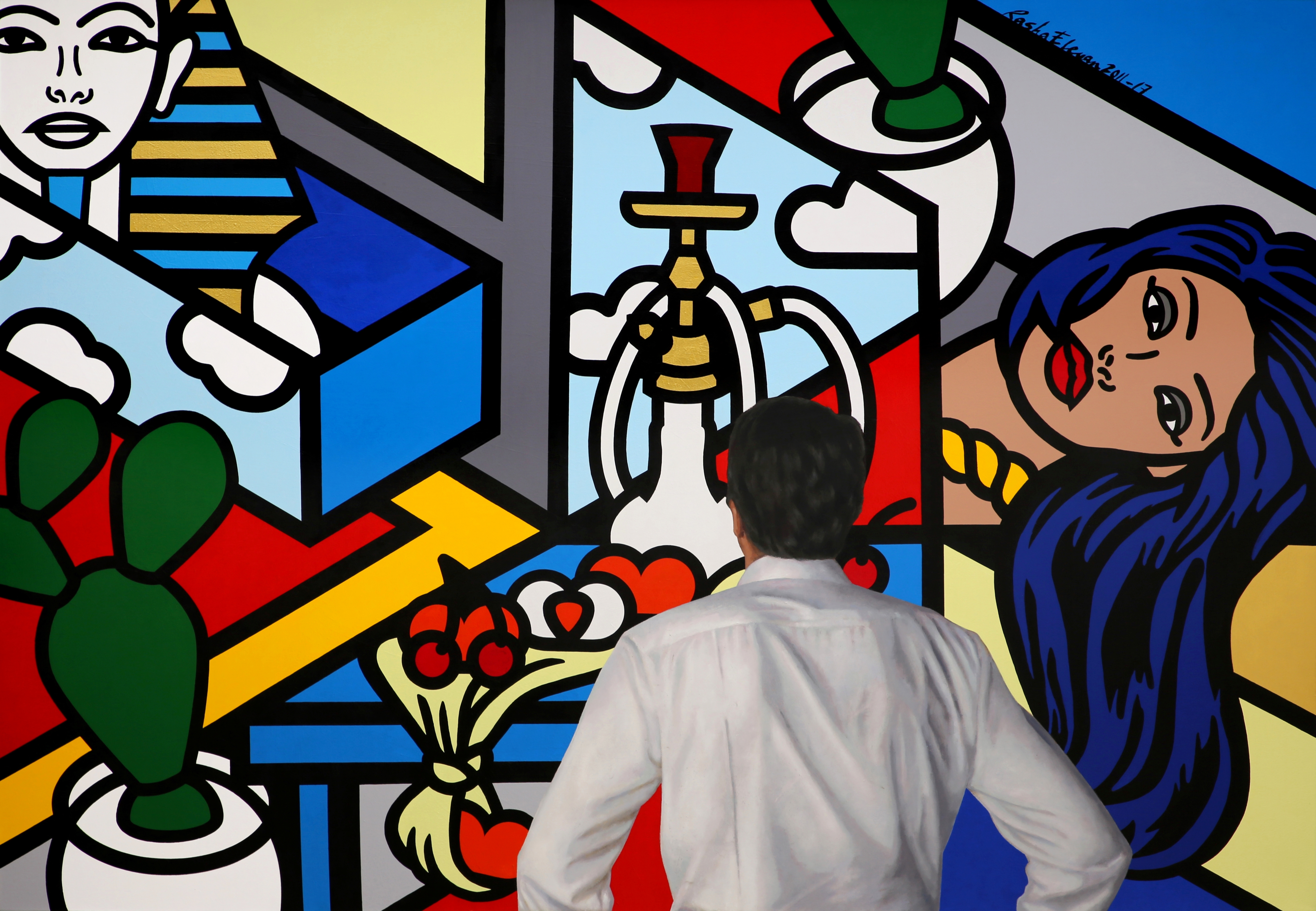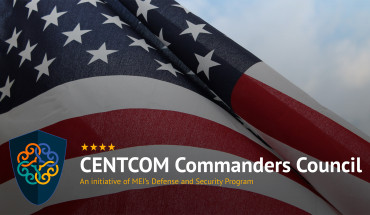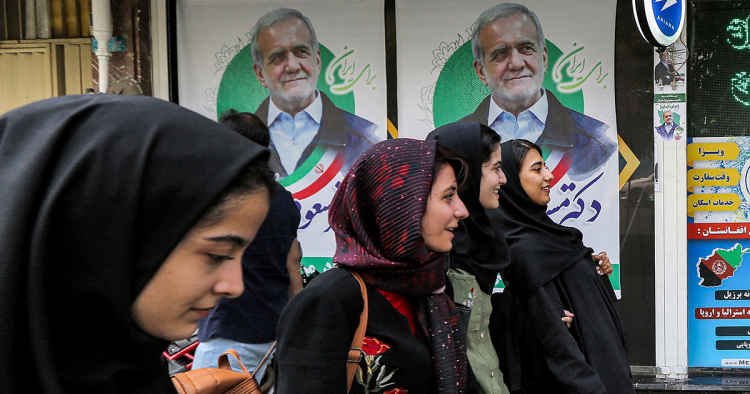President Masoud Pezeshkian’s first year in office was defined by Iran’s familiar political structural constraints, external crises, and a moderate-reformist base forever frustrated with his cautious pragmatism and unfulfilled promises. His July 2024 election was undeniably a setback for hardliners, halting their full consolidation of power at a time when they already dominated the parliament and virtually every other key state institution. Yet it was Supreme Leader Ali Khamenei who ultimately cleared the path for Pezeshkian’s presidency, helping him to emerge as a regime-insider candidate of “change,” serving as a carefully calibrated safety valve for simmering public anger.
One year later, the assessment is sobering: While Pezeshkian has in some ways perhaps helped in slowing the hardline march, he has not made any fundamental difference in how the Islamic Republic is run. Every decision requires second-guessing Khamenei’s next move; and even as a president with limited powers boxed in by the system, he is constantly under the sword of Damocles. During the 12-day war with Israel in June 2025, his hardline critics accused him of wanting to mount a “coup from within” and of showing disloyalty to Khamenei. Even small moves, such as giving an interview to US political commentator Tucker Carlson, have triggered calls for his impeachment or even assassination.
Managing the home and foreign fronts
Pezeshkian’s government managed to reduce the intensity of the public anger that had continued to simmer following the 2022-23 Woman, Life, Freedom protests. By adopting a softer approach on the enforcement of hijab laws and resisting hardliner attempts to ram through harsher legislation, he avoided triggering fresh nationwide unrest. But again, he did so with Khamenei’s tacit support rather than against the supreme leader’s wishes.
Reformist voices, like former Vice President Mohammad Ali Abtahi, also credit Pezeshkian with trying to maintain national calm and basic governance even during extraordinary crises, such as the June war with Israel, and amid the ongoing grinding sanctions regime. To Pezeshkian’s supporters, this capacity for damage control — maintaining electricity, food security, and minimal services while under bombardment by Israel and the US — was no small achievement.
In foreign policy, the Iranian president has prioritized strengthening ties with the country’s neighbors. He signaled a readiness to travel to Afghanistan and intensified engagement with Turkey, Azerbaijan, Iraq, and the Gulf states. During his first year, Iran’s participation in multilateral organizations like the Russia-led BRICS — a grouping that includes Brazil, Russia, India, China, and South Africa, as well as newer members Egypt, Ethiopia, Indonesia, Iran, and the United Arab Emirates — and the China-dominated Shanghai Cooperation Organization continued. Diplomatic outreach was not always purely symbolic: Iran’s foreign ministry did manage to secure some international condemnation of Israel’s attack on Iranian territory, with the United Nations General Assembly and multiple governments censuring Israel.
Yet these efforts were reactive rather than strategic. The 12-day war with Israel and the United States forced Pezeshkian onto the defensive. There was no significant progress on reviving the nuclear deal or easing sanctions. Quiet back-channel talks with Washington continued, but Khamenei’s categorical rejection of open negotiations with President Donald Trump has left Pezeshkian unable to deliver on his campaign promise of re-engaging with the world in a substantive way.
Economic policy
The economy remains Iran’s greatest vulnerability. Inflation is entrenched, the rial continues to depreciate, and unemployment is rising. Pezeshkian’s rhetoric emphasizes “economic resilience” and domestic production, echoing Khamenei’s Nowruz (Persian New Year) call for a “Year of Investment for Production.” But his government has yet to present a coherent plan for stabilizing the economy or attracting investment. And it is hardly a secret that the chief obstacle to Iran’s economic revival is the country’s foreign policy, which has isolated Tehran and kept crippling sanctions in place.
Budgetary decisions have further alienated his reformist supporters. Under Pezeshkian, funding for hardliner-controlled institutions — Islamic Republic of Iran Broadcasting (IRIB), religious seminaries, and ideological organizations — has ballooned. Reformist commentators like Abbas Abdi see this as evidence that Pezeshkian is appeasing rather than challenging the entrenched power centers undermining his agenda.
A critical editorial in the Ham-Mihan newspaper on the first anniversary of Pezeshkian’s election summed up the paradox: He blocked hardliner consolidation but has not delivered meaningful reforms. Key promises — such as reintegrating disillusioned voters, empowering technocrats, curbing corruption, and unblocking the internet — remain unfulfilled. The government’s piecemeal approach, absent a comprehensive domestic and foreign policy framework endorsed by the supreme leader, has left it reactive and ineffective.
Pezeshkian compared to his predecessors
Pezeshkian’s style and political position are distinct from past presidents, while the constraints are familiar. Compared to reformist predecessors like Mohammad Khatami (1997-2005) and Hassan Rouhani (2013-21), he is more understated and less charismatic. He avoids ideological confrontation and prefers a technocratic tone, frequently insisting that he is “not a special person” and that provincial governors and ministers should exercise initiative within the supreme leader’s framework.
This humility sets him apart from Mahmoud Ahmadinejad’s (2005-13) bombastic populism or Rouhani’s well-honed pragmatism. Yet it risks projecting weakness. Where Khatami built a reformist movement and Rouhani cultivated elite networks, Pezeshkian has neither an organized political machine nor deep ties to the establishment. He relies heavily on the goodwill of the supreme leader, whose ideological red lines sharply limit his room for maneuver.
On foreign policy, Pezeshkian resembles Rouhani in seeking engagement with the West, but he has been more cautious about publicly challenging Khamenei’s directives. On social issues, his rhetoric against heavy-handed morality policing recalls Khatami’s style, but he has avoided directly confronting the security apparatus. This caution reflects lessons learned from the fate of past presidents: Khatami was marginalized, Rouhani was discredited by the collapse of the 2015 Joint Comprehensive Plan of Action (JCPOA), and Ahmadinejad was ultimately brought to heel by Khamenei.
To be sure, the broader political system centered around Khamenei has also hardened since Khatami’s era. Hardliners control the judiciary, the parliament, the security agencies, and the Guardian Council, the powerful vetting agency with oversight over legislation, candidates, and elections. In that sense, Pezeshkian inherited a presidency stripped of leverage, in a political climate where dissent is more easily criminalized and reformist allies are routinely disqualified from office. He may be temperamentally different, but the structural constraints are the same.
Public perception
The Iranian public’s initial hope in Pezeshkian — limited to begin with — is eroding. His election mobilized a “gray bloc” of disillusioned voters who had boycotted previous polls, especially urban youth and women galvanized by the Woman, Life, Freedom movement. Many saw him as the only candidate willing to criticize mandatory hijab laws and internet censorship.
One year later, his approval ratings have dropped sharply. The mandatory hijab remains the law (although implementation is now a much looser affair), major apps are still blocked, and political prisoners remain behind bars. Meanwhile, the number of executions in Iran is reaching alarming new levels. Reformist groups, including the Iranian Reformist Front, have publicly warned Pezeshkian that time is running out. In a blunt letter, they demanded bold steps, such as beginning national reconciliation, releasing political prisoners, lifting house arrests, curbing the tight vetting system for political candidates, and opening dialogue with the US. Without visible action, they warned, public support will collapse.
For now, Pezeshkian retains a reservoir of public sympathy. Figures like Abtahi argue that he is “the most wronged and unlucky president,” elected largely as an alternative to hardliners and now constrained by forces beyond his control. Yet sympathy is not the same as confidence. As Ham-Mihan cautioned, the risk is that the continuation of the current trajectory will exacerbate irreversible public alienation from the state.
Pezeshkian himself admits he lacks the authority to deliver sweeping reforms and calls for collective efforts to effect change. This devolution of responsibility reflects reality: In the Islamic Republic, the presidency is structurally weak. Key levers of power — the Islamic Revolutionary Guard Corps (IRGC), the judiciary, the Guardian Council, and state media — are beyond the president’s control. Pezeshkian cannot unilaterally change hijab laws, unblock the internet, or initiate talks with Washington. His ministers are vulnerable to impeachment by the hardline-dominated parliament, as seen in the ouster of Economy Minister Abdolnasser Hemmati.
The president does have a bully pulpit. He can frame debates, push for gradual reforms, and appeal to public opinion. But Pezeshkian has been reluctant to use it aggressively, fearing that open confrontation with Khamenei would lead to his marginalization or removal. This self-restraint may preserve his survival but undermines his credibility as a reformer.
The impact of the 12-day war with Israel
The 12-day war that erupted in June was a turning point for Pezeshkian’s presidency. Israel’s unprecedented strikes on Iranian territory exposed the Islamic Republic’s vulnerabilities. After weeks in hiding to avoid a potential assassination attempt by Israel, Khamenei reappeared publicly during Tasua, a day of religious mourning, at an event that blended Shiite lamentation rituals with patriotic symbols, and reportedly called for an Islamist rendition of the anthem “Ey Iran.” State-backed eulogists began fusing Shiite martyrdom with Iran-centric narratives, signaling a new form of “neo-nationalism” designed to rally the public.
Pezeshkian’s role in managing the crisis was primarily administrative. He ensured continuity of basic services and avoided escalation into a full-scale regional war, a decision that some hardliners criticized as weakness. Reformists, on the other hand, praised him for resisting pressure to expand military operations, arguing that he preserved national calm at a time of existential threat.
It is early to make a full assessment, but it appears the war has also reshaped domestic politics. The attacks allowed Khamenei to reassert symbolic authority and gave hardliners a pretext to clamp down on dissent. At the same time, the patriotic mood temporarily softened ideological divides. Even IRGC-linked officials publicly praised unveiled women as “patriotic Iranians,” an extraordinary rhetorical shift after years of harsh morality policing. Whether this nascent nationalism will translate into lasting social flexibility and a willingness by the regime to loosen its tight control over society in the hope of appealing to the public remains uncertain.
Internationally, the war hardened Iran’s isolation. European governments, already skeptical of Tehran’s intentions, moved closer to triggering the UN “snapback” mechanism included in the JCPOA to reimpose multilateral sanctions. Former lawmaker Heshmatollah Falahatpisheh warned that Israel had successfully exploited Iran’s ambiguous foreign policy and extremist rhetoric to justify its actions. He urged Pezeshkian to clarify the government’s official stance and distance itself from slogans like “wipe Israel off the map” that invite international pressure.
What comes next?
As Pezeshkian enters his second year in office, he finds himself at a crossroads. Reformist allies are pressing him to take bold steps, while hardliners in the parliament and security establishment are determined to rein him in. The Iranian Reformist Front’s eight-point letter lays out the choices starkly: pursue fundamental reforms or sink into the same pattern of timidity that doomed previous reformist administrations.
Pezeshkian could heed the reformists’ advice and prioritize visible measures to rebuild public trust: releasing political prisoners, easing internet restrictions, and addressing the grievances of the Woman, Life, Freedom movement. These steps would likely provoke hardline backlash but could re-energize his — admittedly small — base. Given Khamenei’s control over the regime, however, there is a serious question mark around the value in Pezeshkian even attempting such an approach.
Quiet negotiations with the United States and European powers could produce sanctions relief, especially if Khamenei authorizes direct talks with Washington. Such a breakthrough could help revive the economy and give Pezeshkian political breathing room. But this scenario depends on factors beyond his control, including the unpredictable posture of the Trump administration.
Alternatively, if Pezeshkian continues to retreat, hardliners may force further cabinet changes, block key initiatives, and reduce him to a ceremonial figurehead. In this scenario, he might opt not to seek re-election in 2028 or even resign under pressure.
As long as unelected institutions wield decisive power in Iran, the presidency will remain a scapegoat post. Khamenei’s tight grip on strategic decisions, especially foreign policy, limits any president’s capacity to chart a new course. Pezeshkian’s first year confirms the enduring paradox of the Iranian presidency: high public expectations, minimal institutional power. He has shown resilience in the face of external attacks and domestic obstruction, but his incrementalism risks alienating both his base and the broader public.
To reverse this trajectory, Pezeshkian must decide whether to remain a caretaker or to leverage his remaining political capital for genuine change. That means speaking candidly to Iranians about the limits of presidential power and mobilizing public pressure for systemic reforms, even at the risk of confrontation with the supreme leader.
Without such a shift, Pezeshkian’s presidency will be remembered as yet another missed opportunity: an administration that blocked hardliner domination but failed to rebuild public trust or chart a path out of Iran’s deepening crises.
As the Reformist Front warned in its anniversary letter, “The time left is short; either change the rails of policy toward development or repeat the failed experiences of the past.” The second year of Masoud Pezeshkian’s presidency offers another opportunity for change — but don’t hold your breath.
Alex Vatanka is a Senior Fellow at MEI.
Photo by Raheb Homavandi/AFP Via Getty Images
The Middle East Institute (MEI) is an independent, non-partisan, non-for-profit, educational organization. It does not engage in advocacy and its scholars’ opinions are their own. MEI welcomes financial donations, but retains sole editorial control over its work and its publications reflect only the authors’ views. For a listing of MEI donors, please click here.






